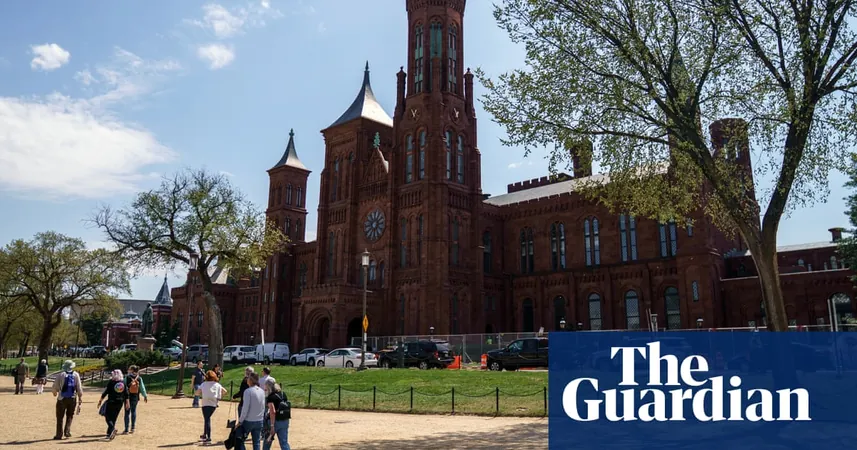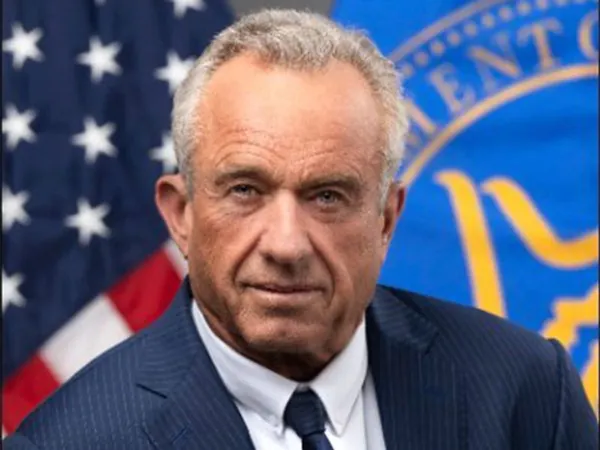
A Cultural Clash: Trump’s Order Threatens to Rewrite U.S. History at the Smithsonian
2025-03-30
Author: Noah
A Cultural Clash: Trump’s Order Threatens to Rewrite U.S. History at the Smithsonian
In the iconic halls of the Smithsonian Institution, where history comes alive—from the awe-inspiring 66-million-year-old T. rex skeleton to the space shuttle representing human achievement in space exploration—visitors have long marveled at the richness of American history. But this legacy faces a daunting challenge as former President Donald Trump aims to reshape how history is taught and understood in America.
Arriving with an executive order dubbed “Restoring Truth and Sanity to American History,” Trump accuses the Smithsonian of unduly focusing on race and gender, claiming that the institution promotes a divisive “woke” ideology. His directive mandates the removal of what he describes as “improper, divisive or anti-American ideology” from the nation’s premier museums and cultural institutions.
Historians and educators are voicing their alarm at what they see as a government-sanctioned attempt to sanitize history, casting serious doubts on the ability to have meaningful discussions about systemic racism and social justice. With Trump also overseeing the John F. Kennedy Center for the Performing Arts, experts worry that this effort to control historical narratives hints at a more authoritarian approach to governance.
“This is a five-alarm fire for public history, science, and education,” said Samuel Redman, a history professor at the University of Massachusetts Amherst. He emphasized that such a direct assault on an institution like the Smithsonian is unprecedented and poses a serious threat to the integrity of historical scholarship.
The Smithsonian has a unique place in American culture, established by James Smithson, a British scientist who never set foot in the U.S. but left his fortune to promote knowledge. Over its 178-year history, it has grown into a sprawling complex of 21 museums, including the National Museum of American History and the National Museum of Natural History, drawing millions of visitors annually.
Trump's latest actions come after various cultural conflicts moonlighting as political battles. For instance, his administration previously attempted to dismiss diversity, equity, and inclusion initiatives across government institutions. The order’s implications extend beyond the Smithsonian. It reflects a broader agenda of enforcing a “patriotic” narrative that aligns with Trump's perception of American exceptionalism.
The executive order critiques the Smithsonian’s efforts to address issues like race, stating that these efforts undermine the accomplishments of the nation. An example highlighted was how the National Museum of African American History and Culture previously described attributes like “hard work” and “the nuclear family” as part of a “white culture,” a statement the museum later retracted due to backlash.
Critics warn that this “cultural clampdown” will only widen societal divides. Noted author Tope Folarin remarked on the paradox of unity being built on the denial of historical truths. “You cannot ‘foster unity’ by refusing to tell the truth about our history,” he stressed, emphasizing the need to acknowledge even the uncomfortable aspects of America’s past.
The repercussions of Trump’s order are yet to be fully realized, as staff at the Smithsonian remain in a state of uncertainty regarding future exhibitions and educational programming—especially with the country's 250th anniversary of independence approaching.
Historians like David Blight view the executive order as an outright assault on scholarly freedom and integrity. He warned that it sends a chilling message to historians and educators about the future of truth in American history, stating, “It’s a declaration of war on American historians and curators.”
As the debate over historical interpretation intensifies, many are left wondering: what will the future of American history look like under this new directive? Will it be a multifaceted narrative that captures the complexity of the American experience, or a monochromatic version that glosses over the nation’s struggles and triumphs alike? The answer remains as critical as it is uncertain.









 Brasil (PT)
Brasil (PT)
 Canada (EN)
Canada (EN)
 Chile (ES)
Chile (ES)
 Česko (CS)
Česko (CS)
 대한민국 (KO)
대한민국 (KO)
 España (ES)
España (ES)
 France (FR)
France (FR)
 Hong Kong (EN)
Hong Kong (EN)
 Italia (IT)
Italia (IT)
 日本 (JA)
日本 (JA)
 Magyarország (HU)
Magyarország (HU)
 Norge (NO)
Norge (NO)
 Polska (PL)
Polska (PL)
 Schweiz (DE)
Schweiz (DE)
 Singapore (EN)
Singapore (EN)
 Sverige (SV)
Sverige (SV)
 Suomi (FI)
Suomi (FI)
 Türkiye (TR)
Türkiye (TR)
 الإمارات العربية المتحدة (AR)
الإمارات العربية المتحدة (AR)